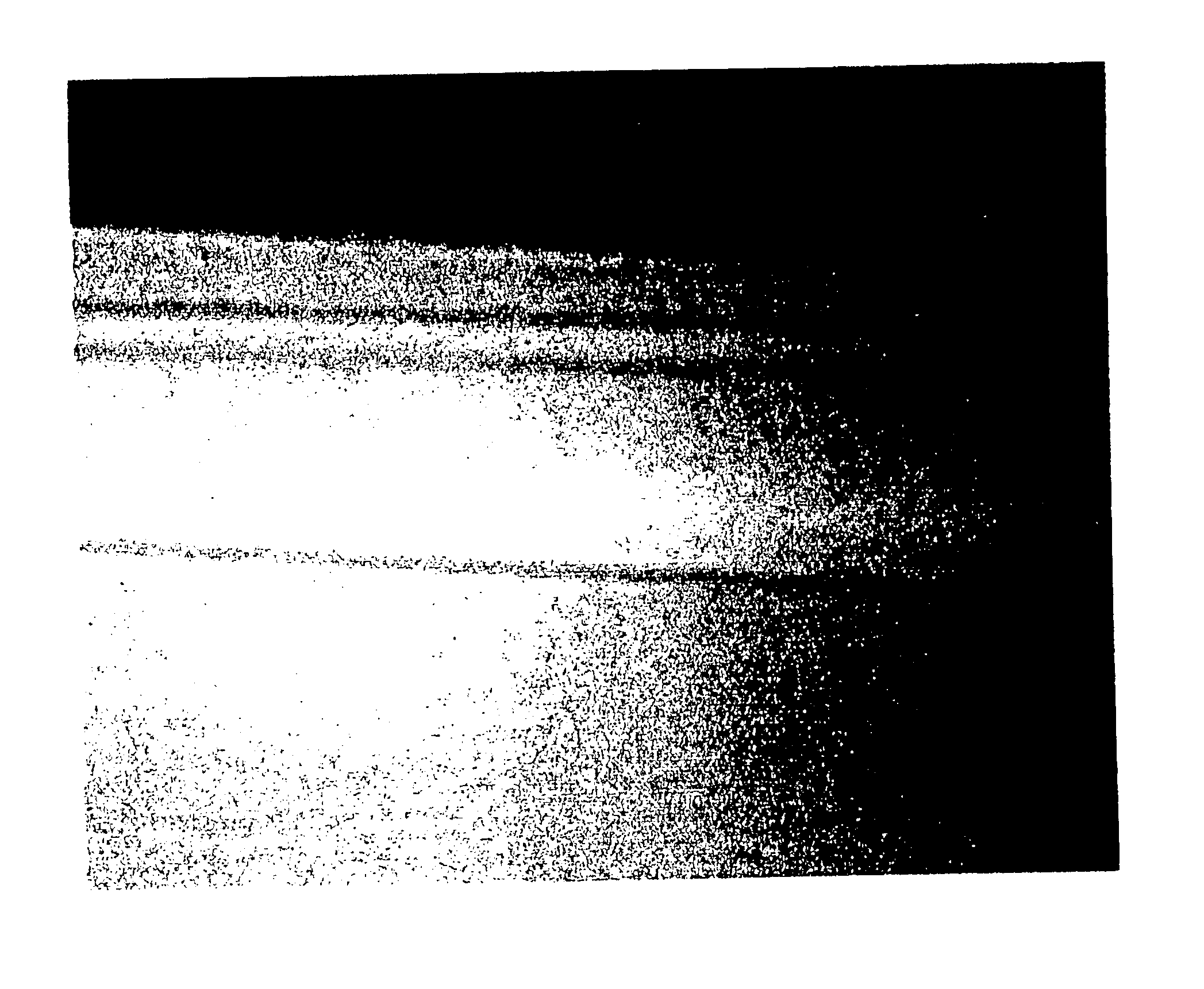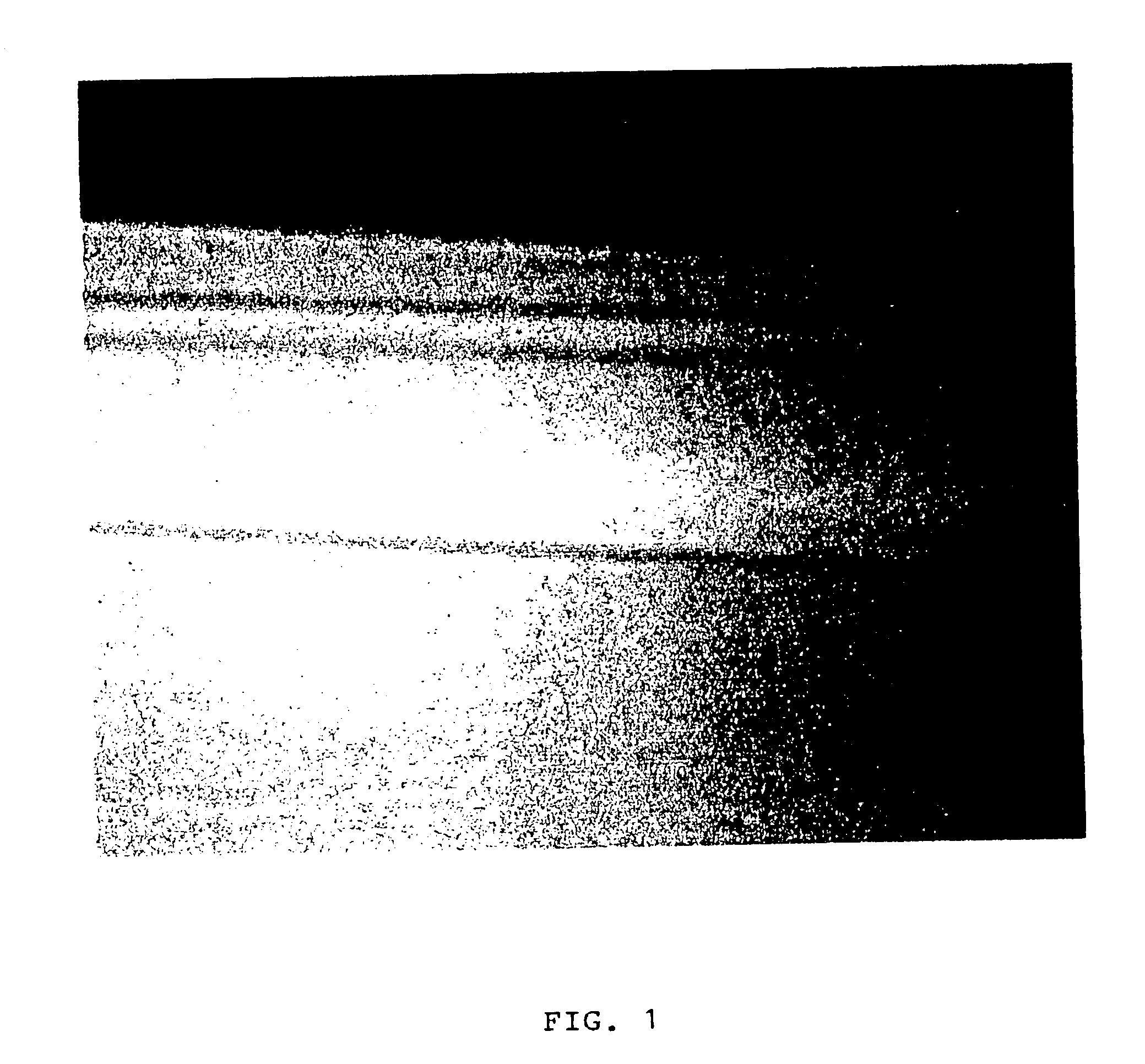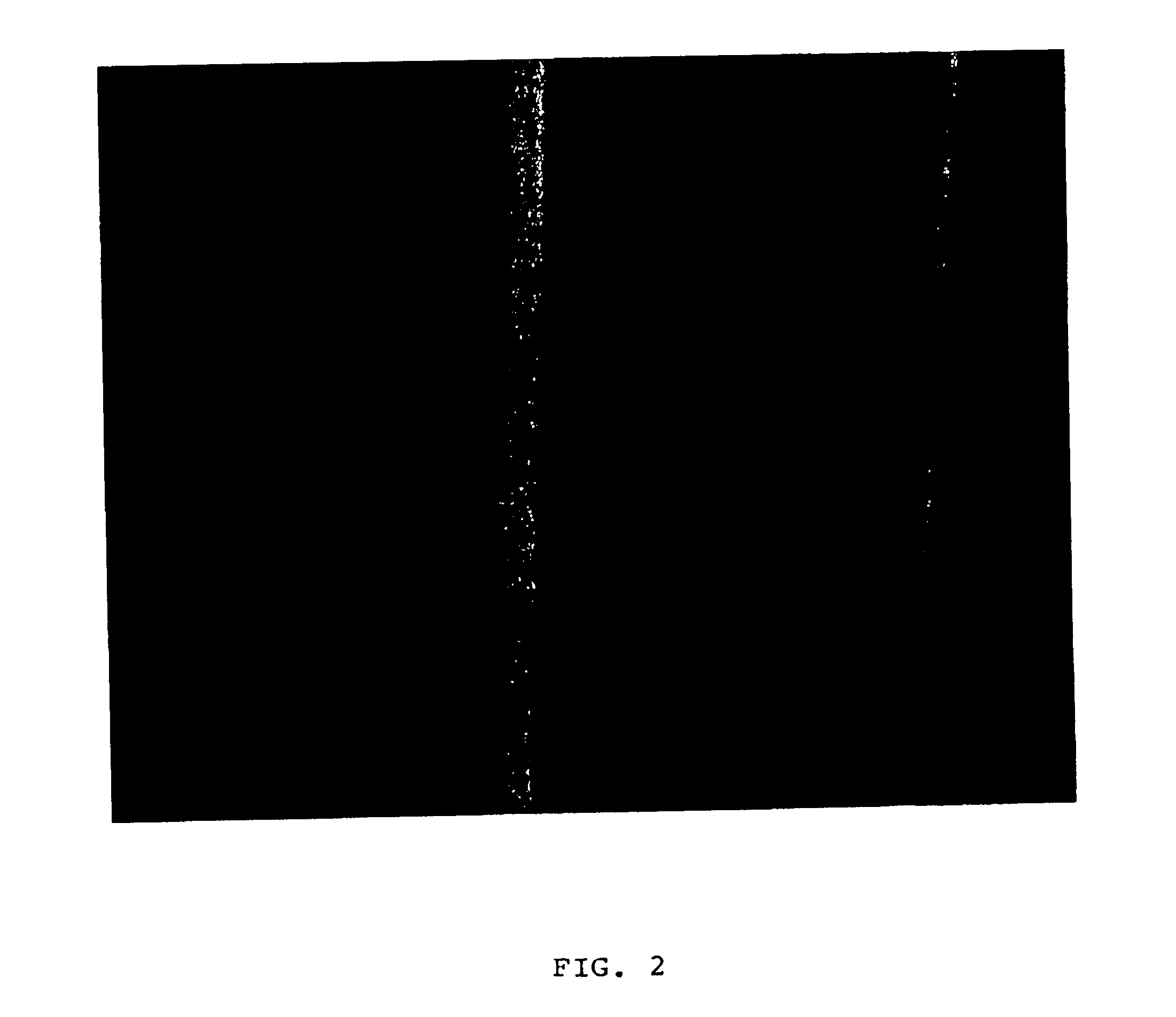Cut resistant paper and paper articles and method for making same
a technology of paper and paper articles, applied in the field of papermaking arts, can solve the problems of inability to resist cuts, large discomfort, and tend to have sharp edges, and achieve the effect of improving the resistance to inflicting cuts on human skin
- Summary
- Abstract
- Description
- Claims
- Application Information
AI Technical Summary
Benefits of technology
Problems solved by technology
Method used
Image
Examples
example 1
A series of papers were formed from a mixture of about 40% softwood pulp and about 60% hardwood pulp and having a Canadian Standard Freeness of about 450 and incorporating amounts of expandable microspheres and being calendered to a variety of differing calipers. The resultant papers containing the expanded microspheres were then tested to determine the likelihood of an edge cutting a person's fingers while being handled. In place of actual human skin, the tests were performed using a rubberized finger covered by a latex glove material which served as an artificial “skin”.
The samples for examination were die cut using a laboratory die cutter 20 illustrated in FIG. 3. The cutter includes a bottom housing 22 having a recess 24. A cutting blade 26 is mounted in a supporting block 28 and the block is fixed in the recess 24 so that the cutting blade projects upward.
The die cutter 20 also includes an upper housing 30 which is held in alignment with the lower housing by a plurality of bolt...
example 2
A similar set of tests were conducted using a series of papers formed from a second pulp furnish, again formed from a mixture of about 40% softwood pulp and about 60% hardwood pulp and having a Canadian Standard Freeness of about 450. In these tests, two sets of papers were produced, with each set of papers having approximately the same basis weight. For one group of papers, the basis weight was on the order of about 130 lb / 3000 ft2 and for the second group, the basis weight was about 150 lb / 3000 ft2. Within each group, various amounts of microspheres were added and the resultant paper caliper varied. Again, 30 replicates of each sample were tested for cutting tendency. The results are shown in Tables III and IV.
TABLE III%FinalSampleExpancelBasis weightCaliperDensityTotalCuttingID(Wt %)(lb / 3000ft2)(Mils)(lb / 3000ft2 / mil)CutsIndex1012912.110.721773213315.58.5815344312817.27.4610165015313.811.125807214914.610.216368315018.48.15712
These results show a clear trend toward decreases in tot...
example 3
A similar set of tests were conducted using a series of papers formed from a third pulp furnish including about 35% softwood fibers and about 65% hardwood fibers. Again, 30 replicates of each sample were tested for cutting tendency. The results are shown in Tables V.
TABLE V%FinalSampleExpancelBasis weightCaliperDensityTotalCuttingID(Wt. %)(lb / 3000ft2)(Mils)(lb / 3000ft2 / mil)CutsIndex124 lb012911.3911.3428116control143 lb014811.5712.763095control4212814.838.6115216212515.218.22797212414.948.28558212515.088.2715159212514.568.6289
In these tests, the papers containing expanded microspheres were produced to provide a target basis weight of about 124 lb / 3000 ft2 and compared to two controls formed with no microspheres and having basis weights of 124 lb / 3000 ft2 and 143 lb / 3000 ft2 respectively. The expanded microsphere samples again showed dramatic reductions in cutting tendency as compared to the control papers. The total number of cuts was reduced by about 50% or more in each case and the...
PUM
| Property | Measurement | Unit |
|---|---|---|
| Length | aaaaa | aaaaa |
| Percent by mass | aaaaa | aaaaa |
| Percent by mass | aaaaa | aaaaa |
Abstract
Description
Claims
Application Information
 Login to View More
Login to View More - R&D
- Intellectual Property
- Life Sciences
- Materials
- Tech Scout
- Unparalleled Data Quality
- Higher Quality Content
- 60% Fewer Hallucinations
Browse by: Latest US Patents, China's latest patents, Technical Efficacy Thesaurus, Application Domain, Technology Topic, Popular Technical Reports.
© 2025 PatSnap. All rights reserved.Legal|Privacy policy|Modern Slavery Act Transparency Statement|Sitemap|About US| Contact US: help@patsnap.com



